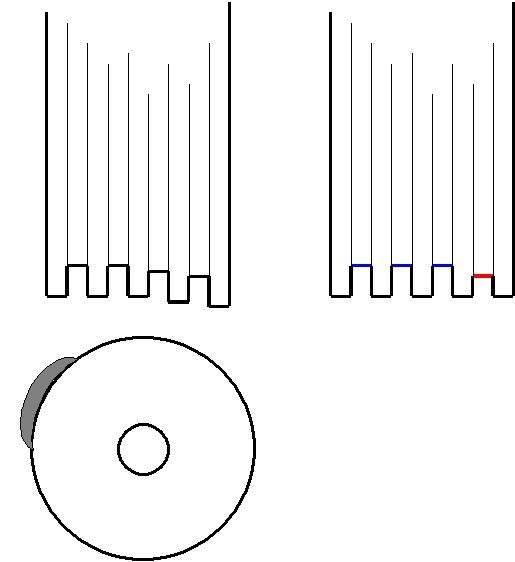Anytime you see a bulge or a wobble in the tread as you spin the tire, you are done. Replace it. It is when you feel the hard bouncing at highway speeds, or the subtle sideways rocking feeling at low speeds, that further inspection is required. I learned this in the 1980's from a service adviser who had an uncanny ability to identify what was needed to solve a customer's problem. He sold someone a pair of new tires. When I removed them, I did not see anything wrong and assumed he was selling parts that were not needed. I put those tires on my car, and within a month, both had broken belts. I was frosted that he knew what to look for and I did not.
Those bulges and tumors I mentioned are real easy to spot. Every once in a while you can see the wobbling tread on the car in front of you. This is the left tire in my nifty drawing. The lower right corner shows the hump you would see from in front of the car as you spin that tire. The gray area is the hump on the lower tire as you would see it from the side of the car.
The more subtle cause is easiest to find when the car is in the air on a hoist. Once you have finished watching the tread surface that contacts the road, and that was found to be true, look inside the grooves in the tread at the bottoms of those grooves. As the tire spins slowly, most of the grooves look like the blue sections in the tire on the right of my sad drawing. You are looking for a section where it bumps up a little as shown by the red section. What has happened here is the belt has started breaking but it has been going on so slowly, as the hump builds up, tread has had time to wear flat. This is where the belt is going to fail completely real soon, and is in fact what happened to those two old tires I put on my car.
Be aware all tires also have wear bars in the same part of the tread, but those go all the way across the tread and are not very wide. You will see those in multiple places around the tire and are not related to a broken belt.
Image (Click to make bigger)
Thursday, March 29th, 2018 AT 9:06 PM



